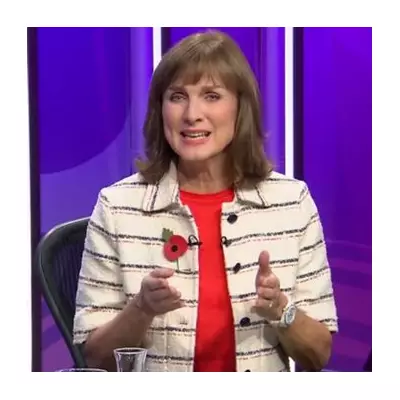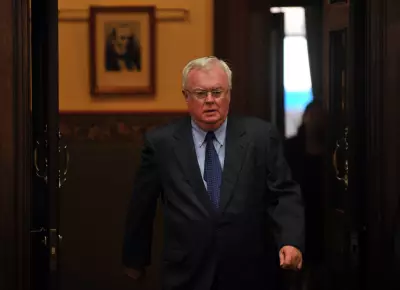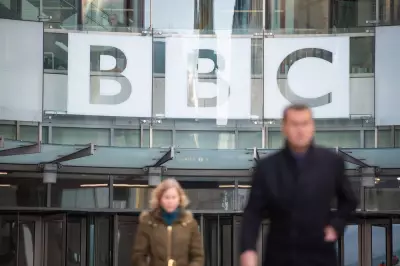
Republican Party Faces Mounting Affordability Crisis
The Republican party finds itself in an increasingly precarious position as it attempts to reclaim the affordability agenda that has become central to American political discourse. Despite their efforts to position themselves as champions of economic relief, the party confronts two fundamental obstacles: their own policies and their president.
Following recent election results, prominent Republican figures have rushed to emphasise their commitment to addressing the cost of living. Entrepreneur Vivek Ramaswamy immediately posted a video on 4 November urging his party to focus on making the American dream affordable again. He specifically called for reducing electric, grocery, healthcare, and housing costs while outlining concrete plans to achieve these goals.
Policy Failures Undermine Republican Credibility
Vice President JD Vance attempted to bolster the administration's position the following morning, employing familiar tactics of reality denial and excuse-making. He claimed the president had already achieved progress in lowering interest rates and inflation while blaming the inherited situation on the previous Biden administration.
However, other Republicans have been more candid about their party's shortcomings. Representative Marjorie Taylor Greene openly criticised her colleagues for abandoning their constituents during recent government shutdown discussions. She highlighted the potential consequences if tax credits for health insurance premiums purchased through the Affordable Care Act marketplace were allowed to lapse.
Greene warned that if regular Americans' health insurance premiums double, many would struggle to pay their rent. She noted that food prices have increased significantly this year and expressed concerns about an impending economic slowdown, possibly even a recession.
Concrete Examples of Policy Failures
The Republican approach to key affordability issues reveals significant contradictions between their rhetoric and actions:
Electric costs remain problematic as the Low-Income Home Energy Assistance Programme faces uncertainty. Although it avoided presidential cuts, appropriations remain inadequate, and the entire programme staff was dismissed during the 2025 Health and Human Services purge, creating delays as winter approaches.
Grocery expenses continue rising due to Trump's tariffs impacting everything from rice to Halloween candy. Agricultural labour shortages, worsened by mass deportation policies, have driven fruit and vegetable prices up by 15% this year according to Farmonaut analysis.
Housing affordability faces new threats from proposed Housing & Urban Development rules that could endanger rental assistance for 4 million low-income Americans. Potential funding cuts to permanent housing programmes might dramatically increase homelessness.
Healthcare costs represent perhaps the most glaring contradiction, given the recent 42-day government shutdown occurred precisely because Republicans refused to extend tax credits that make healthcare affordable for millions.
Presidential Inconsistency Compounds Problems
President Trump's erratic messaging has further complicated Republican efforts to present a coherent affordability agenda. Before the election, he aggressively promoted cost reduction promises on Truth Social, claiming gasoline would drop to approximately $2 per gallon and urging voters to support Republicans for a great and very affordable life.
Following the election, he celebrated the anniversary of his election while boasting about the booming economy and declining costs. However, his evident frustration emerged as he alternately claimed Republicans weren't discussing affordability enough, called it a Democratic con job, and then insisted he didn't want to hear about affordability issues.
During a news conference with Hungarian Prime Minister Viktor Orbán, Trump blamed reporters for focusing on cost of living concerns, falsely asserting that everyone knows expenses are far lower under his administration than under Joe Biden.
The president has floated various questionable proposals to address affordability, including a $2,000 tariff dividend excluding high-income earners, 50-year mortgages, and direct payments for health services instead of Obamacare provisions. Treasury Secretary Scott Bessent has subsequently downplayed these ideas, admitting no formal proposals exist for healthcare payments and suggesting the tariff dividend might simply manifest as tax decreases.
Contrasting Priorities Damage Republican Standing
The optics of Republican priorities have raised serious questions about their commitment to ordinary Americans' financial struggles. While the Trump administration moved to halt benefits for 42 million Supplemental Nutrition Assistance Programme recipients to pressure Democrats on healthcare, the president attended a lavish Great Gatsby-themed Halloween party at Mar-a-Lago, featuring truffle dauphinoise and pan-seared scallops.
Simultaneously, he posted photographs of the renovated marble-clad Lincoln bathroom, creating stark contrasts with Americans facing potential hunger and healthcare disruptions. Even as the government shutdown appeared to be ending, the administration asked the Supreme Court to stay a lower court's order to distribute full SNAP benefits immediately.
The implicit message to vulnerable Americans seemed to be: I'm starving you because Democrats won't let us take your healthcare away - a position that has proven politically damaging.
House Speaker Mike Johnson attempted to soften this perception by assuring suffering Americans they have a home in the Republican party. However, the growing evidence suggests that home might come with reduced healthcare access, rising food costs, and uncertain housing prospects.
As Republicans continue struggling to formulate a credible affordability agenda, their policy decisions and presidential leadership increasingly appear at odds with the economic relief they promise voters. The gap between Republican affordability rhetoric and reality continues widening, creating significant political vulnerabilities as cost of living concerns dominate American political discourse.





